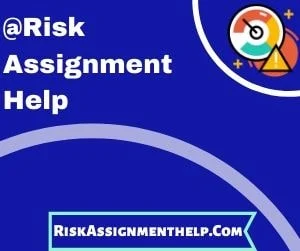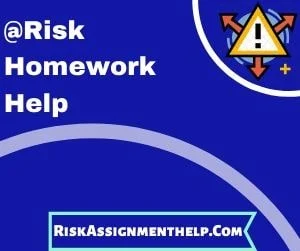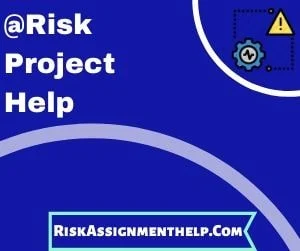Natural Catastrophes Assignment Help Checklist
- Natural Catastrophes Assignment Help
- Natural Catastrophes Homework Help
- Natural Catastrophes Project Help
Natural Catastrophes Assignment Help

If you require Natural Catastrophes task assistance, there are a number of approaches that are readily available. One is to use the "exact same job" method. Another is to establish a new role with a different set of dangers.
If you have a plan for your Natural Catastrophes Assessment Task (RA), you need to think about the method. The task method is effective if the job appointed is a small one. A task with a small chance of failure (or success) can allow for the best results in managing dangers.
The majority of kinds of tasks are defined in terms of threat and are used for approximating and managing dangers. It is a lot easier to examine and manage a small task than a large one. If you have a huge task that you should handle every day, you are looking at big risk.
Big jobs that involve substantial threats, have a high influence on others. There are few methods to do a big job on your own, or one that is hard to do. When a large task is included, it becomes a team effort.
In many cases, risks can be as little as a single everyday step. The risks and chances in the daily life of the employee are considerable. Group management techniques can be beneficial for dealing with such threats.
The very best way to establish a Natural Catastrophes assessment project is to assign one major task to each individual. In many cases, it is best to assign some danger to each person so that they understand the threats included with that task. The threat will be identified in the appointed task and will be included in the annual risk report.
In some cases it is needed to specify a brand-new function for people with different roles. Each role might have a brand-new task to undertake, therefore the Natural Catastrophes assessment task could end up being complicated. A new function will allow each staff member to complete their job and define the risks connected with that task.
Managing the risks involved in a Natural Catastrophes assessment assignment is an intricate procedure. The threats will typically involve staff. You require to take a look at how the dangers will affect each employee separately, and how they will affect the company.
A vital part of this procedure is to choose who has the obligation for the job. Is it the employee, or the supervisor? It is not uncommon for an individual to delegate a task that needs risk assessment, however that is not how to manage threats effectively. The Natural Catastrophes evaluation project should be assigned by an authority.
When assigning a Natural Catastrophes evaluation project, think about a situation where you need to delegate, however don't desire the threat to go unnoticed. You want to make certain that the danger is assigned properly. If the Natural Catastrophes assessment project is designated to somebody who does not have the knowledge to manage the assignment, there is a danger of a threat assessment ending up being another opportunity for mistake, causing extra danger.
The simplest method to determine who has the responsibility for a Natural Catastrophes assessment project is to use team management. If you have more than one group handling the project, consider organizing tasks based on the ability level of the staff members in each team. Each team can consider its own approach to risk evaluation. Designating the exact same job by each team can confuse the jobs, however it is a way to guarantee that the risk is appointed properly.
The Natural Catastrophes assessment assignment is an intricate task that can make or break your business. With a little help from management training, you can avoid the common mistakes and guarantee that your @risk project leads to effective outcomes.
Natural Catastrophes Homework Help

Natural Catastrophes research aid can be a genuine game changer when it comes to getting the most out of the expert service that a company attends to its workers. This is also real of most Natural Catastrophes assessment assignments, which can make a big difference when it concerns reducing general threat.
It's true that every risk project can have an impact on the company's bottom line. Every specific assigned to a specific risk activity has a direct effect on the overall structure of the company. If the entire personnel has the ability to understand the threats involved and take actions to reduce the dangers associated with that specific project, there will be a much bigger effect than if every individual were to feel disinterested in the project.
For a Natural Catastrophes assessment assignment, this can make a huge difference. A person's attention and interest are highly likely to move towards the assigned job. If there are a lot of concerns or concerns associated with the assignment, then there may be a lower probability that the whole team will discover a solution to the problems associated with the project.
But the work of a Natural Catastrophes assignment is to produce opportunities for progress and that means that the assignment requires to be addressed. The very best way to do this is by designating time to solve problems related to the assignment.
A high-quality support group is necessary when it pertains to supporting the development of a company through the development of Natural Catastrophes assessment projects. You must search for companies that have a variety of individuals designated to this kind of task so that all of them are as close as possible to the project. This ensures that the assignment is managed effectively and that all of the private needs are met for the assignment.
When you're assigned to Natural Catastrophes task, it can be tempting to skip a number of tasks just because they are no longer urgent, or you wish to move onto another job. However when this occurs, it's important that you take actions to correspond with individuals designated to the project.
You'll likely be making a lot of development on the risk assessment assignment if you're working closely with your assignment supervisor. The assignment manager can be a valuable source of feedback on the progress you're making on the assignment and any concerns that are required to be resolved.
When it pertains to managing your risk assessment task well, it's important that you work as a group. And when it comes to working as a team, the very best way to attain this is by handing over tasks.
Some tasks may be hard to entrust such as finding an option to a problem related to the danger assessment task. If there are a variety of people appointed to the assignment, then it is necessary that they can work as a group to resolve the issue.
If the assignment is not immediate or you don't require more time to deal with the project, then you can pick to entrust the job. However, if the assignment is very urgent, then it's essential that you keep an everyday journal of how the appointed job is progressing and if there are any areas that need more review prior to you can start on them.
If you can entrust jobs successfully, then the danger assessment task can actually be a great deal of enjoyable. It's important that you keep your eyes and ears open and stay connected to other employee to ensure that you can be as productive as possible with the assignment.
Getting the most out of Natural Catastrophes homework assistance and delegation strategies can make a genuine difference when it concerns guaranteeing that the Natural Catastrophes evaluation project is well managed. That implies that you'll be well placed to create enduring impact for your company which you'll continue to delight in life with your new team members.
Natural Catastrophes Project Help

Natural Catastrophes job aid is critical to task success. Risk evaluations can assist prevent, or a minimum of minimize, costly errors. By doing this you can move ahead and finish the project on time.
The Natural Catastrophes evaluation project, likewise referred to as the Risk Assessment Ratio (R.A.Q.) is an examination of the Project Supervisor's capability to effectively complete the task.
Numerous areas of evaluation must be examined to complete a successful Natural Catastrophes evaluation project. A group of quality control professionals, task supervisors, job managers play a crucial role in the R.A.Q. assessment. Each person has a special role and each location of the process needs specific training and proficiency.
Nevertheless, there are lots of common elements throughout the many various locations that make up a job. These common locations are the Natural Catastrophes classifications that are assigned to tasks. Each classification has different attributes that make it appropriate to different projects.
There are four significant Natural Catastrophes, or important requirements that must be met for the project to be successful. These are: costs, schedule, technical risks and scope. These 4 Natural Catastrophes are regularly designated to jobs by task managers, task staff member.
A project is successfully completed when all four threats have been sufficiently assessed. Effective projects do not fulfill any of the four dangers, however the project fulfills several of the remaining two threats.
When a project fails to satisfy any of the four significant dangers, the Task Manager must first of all examine job threat and then develops a corrective action strategy. These restorative actions need to be developed by the task supervisor and/or the senior Job Manager.
Prior to examining the task, the project supervisor should review the task requirements, understanding the R.A.Q. required for the task. Understanding the requirements is needed for the Job Manager to establish the needed danger assessment classification.
The Job Manager then completes the risk evaluation task by listing each danger type and the matching required Risk Category. Each R.A.Q. category must have a list of categories and threat levels and these criteria must be used in an analysis of the job to guarantee that all risk classifications are being properly identified and represented.
Once all danger categories are plainly specified and accounted for, the Job Manager will complete the category of the project. This consists of determining the dangers that will be alleviated and the threats that need to be addressed. Mitigation describes reducing the impact of the recognized dangers on the task.
The Project Supervisor will then use the R.A.Q. to generate the evaluation report. The Project Supervisor will likewise produce a Task Status Report, which will identify any corrective actions that should be taken and recognize the progress of the task.
The Project Manager must completely complete all jobs related to finishing the Natural Catastrophes task and the other actions needed to finish the task.